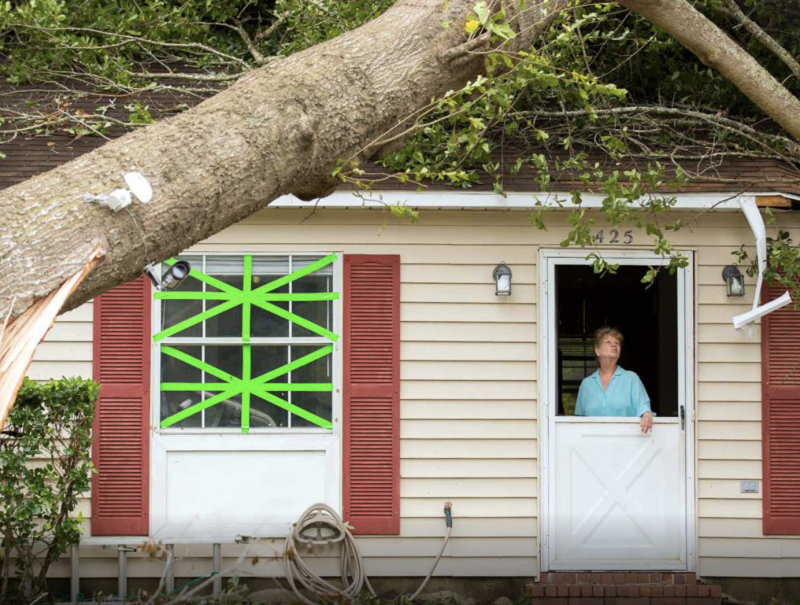New Data Sources and Five-Year Trends Highlight New Disaster Philanthropy Report
It is incredibly exciting to announce our fifth annual research report, Measuring the State of Disaster Philanthropy 2018: Data to Drive Decisions, developed in partnership with Foundation Center. Drawn from 12 data sources, the new report documents $30 billion in private, public, corporate and individual disaster-related giving to address major disasters and humanitarian crises that affected […]


It is incredibly exciting to announce our fifth annual research report, Measuring the State of Disaster Philanthropy 2018: Data to Drive Decisions, developed in partnership with Foundation Center. Drawn from 12 data sources, the new report documents $30 billion in private, public, corporate and individual disaster-related giving to address major disasters and humanitarian crises that affected millions globally in 2016.
 There are two aspects of this year’s report that are particularly notable. One is that it includes a first-time analysis of contributions by non-U.S. donors, public charities and smaller U.S. foundations. This gives the report a broader picture of disaster philanthropy to better assist funders in data-driven decision-making to support the full arc of disasters. These additional data sources give everyone in philanthropy a greater understanding of the many avenues of funding that are directed to disasters. With these new sources, we have a good baseline for the entire scope of disaster giving.
There are two aspects of this year’s report that are particularly notable. One is that it includes a first-time analysis of contributions by non-U.S. donors, public charities and smaller U.S. foundations. This gives the report a broader picture of disaster philanthropy to better assist funders in data-driven decision-making to support the full arc of disasters. These additional data sources give everyone in philanthropy a greater understanding of the many avenues of funding that are directed to disasters. With these new sources, we have a good baseline for the entire scope of disaster giving.
Key findings for 2016 philanthropic funding reveal:
- Almost $200 million in funding by global foundations and public charities for disasters and humanitarian crises.
- Natural disasters accounted for 44 percent of disaster funding.
- Man-made accidents received 15 percent of disaster funding, with several large grants addressing the Flint water crisis.
- Among disaster assistance strategies, more than 40 percent of dollars were for response and relief; 17 percent went toward reconstruction and recovery—more than half of this was related to the Flint water crisis.
The second thing of note is that we now have five-year giving trends of the largest 1,000 U.S. foundations. Some of these key findings include:
- Funding tends to be episodic and dependent upon the crisis. Funding spiked in 2014 due to large grants for the Ebola outbreak, then declined over the next two years. In 2015, foundations increased funding for complex humanitarian emergencies in response to the Syrian war and the refugee crisis.
- Natural disasters (59 percent on average) was the largest focus for disaster funders.
- Response and relief efforts were the most funded assistance strategy across all years, averaging 47 percent of all disaster funding.
We are hosting a webinar in collaboration with Foundation Center this coming Wednesday, November 14 at 2:00 pm ET/ 1:00 CT, “Measuring the State of Philanthropy 2018.” We will be discussing key findings and sharing the data dashboard and mapping platform, available here. As part of the panel, funders will also discuss their insights on strategic disaster-related giving, with a focus on the Flint water crisis.
I am also happy to tell you about, “Tutorial Tuesdays.” New this year, we’ll have a series of quick videos on YouTube to demonstrate how to use the report’s tools to make better data-informed disaster-giving decisions. Watch our social media or check out our home page for updates.
I will end with two notes of appreciation. Thanks to you for your interest in this report and thank you to our funders. This project was made possible by a generous gift from the Irene W. and C.B. Pennington Foundation, with additional funding from the Conrad N. Hilton Foundation.
More like this

What We Can Learn from Five Years of Mapping Disaster-Related Giving

